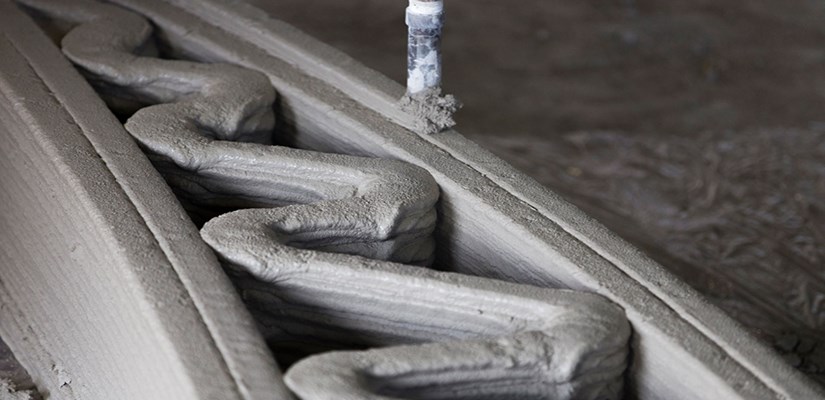
The innovation, which is due for its first test deployment in 2022, represents a major leap in construction technology. The flexible technology is expected to simplify the build programme and deliver environmental, cost and community benefits when it is used on HS2 for the first time.
Printing reinforced concrete using computer operated robots will allow our Skanska Costain STRABAG JV to build structures on site instead of transporting them as pre-cast slabs by road, before being assembled and lowered into place by large cranes.
As flexible mobile technology, 3D concrete printing means the technique can be used in physically restricted areas so there is no need to develop complicated and potentially expensive logistical plans. In addition, 3D printed concrete delivers a low carbon, quick drying solution that saves time.
Using a computer-controlled robot enables the reinforced concrete structures to be printed with a unique strengthening internal structure, which not only significantly reduces the quantity of concrete required but also cuts waste.
The technology has been developed by our partner, ChangeMaker 3D. Working with Versarien, a UK advanced materials specialist, the innovation takes the 3D concrete printing process and combines it with the strongest material ever tested: graphene.
Concrete with microscopic strands of graphene just several atoms thick running through it like stripes in a stick of rock replaces traditional steel to help drive improved site safety, greater construction flexibility, shorter build time and a smaller carbon footprint.
It’s estimated that the process being developed with ChangeMaker 3D will reduce the concrete content in some of the structures by up to 50 per cent. By removing steel and simplifying the construction process, which will no longer require cranes and significantly fewer delivery trucks, the carbon reduction could be even greater.
HS2 Innovation Manager, Rob Cairns, said: “The project SCS JV and ChangeMaker 3D are collaborating on is a fantastic demonstration of the kind of far-reaching innovations HS2 enables. With a build programme spanning the decade and across the country, the project is creating an ideal environment to develop technologies with the potential to transform how major infrastructure is built.”
Skanska Costain STRABAG JV Temporary Works Manager, Andrew Duck, said: “Automation enabled by Printfrastructure’s 3D reinforced concrete printing creates a factory-like environment that delivers a high-quality product that both increases efficient use of materials, and reduces our carbon footprint.
“It is important that we give technologies such as Printfrastructure the opportunity to flourish because of the possibilities it offers the industry to make a step change in how projects are delivered.”
Proof of concept trials are due to begin in Spring 2022. To find out more, visit www.hs2.org.uk